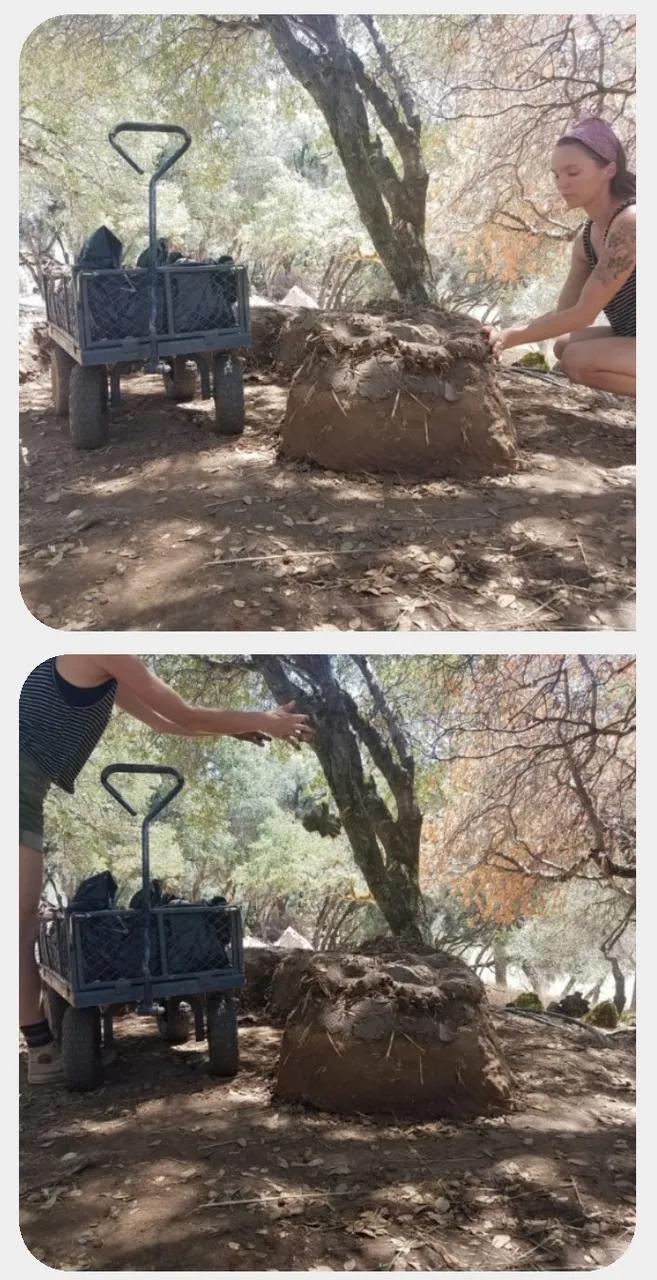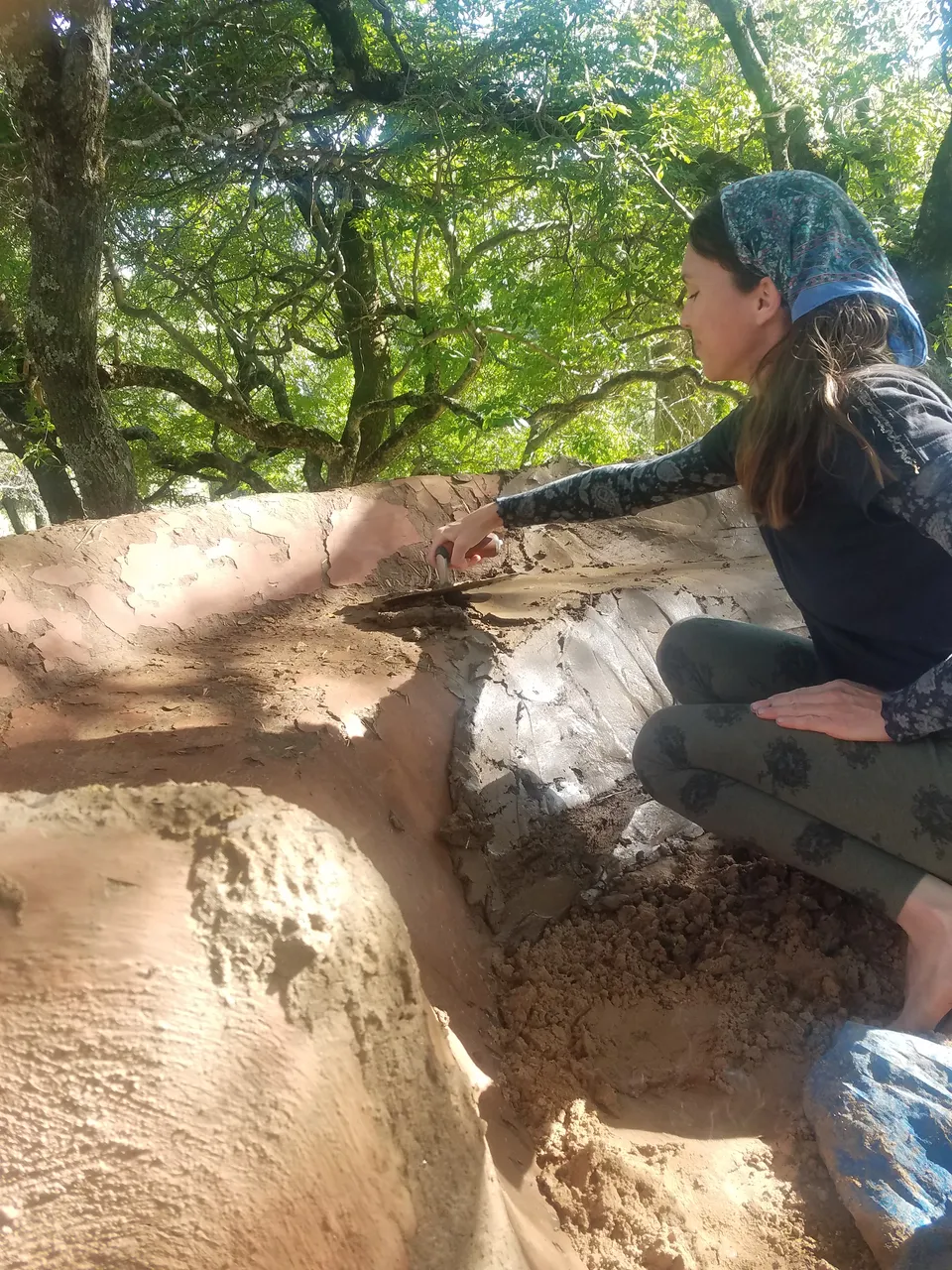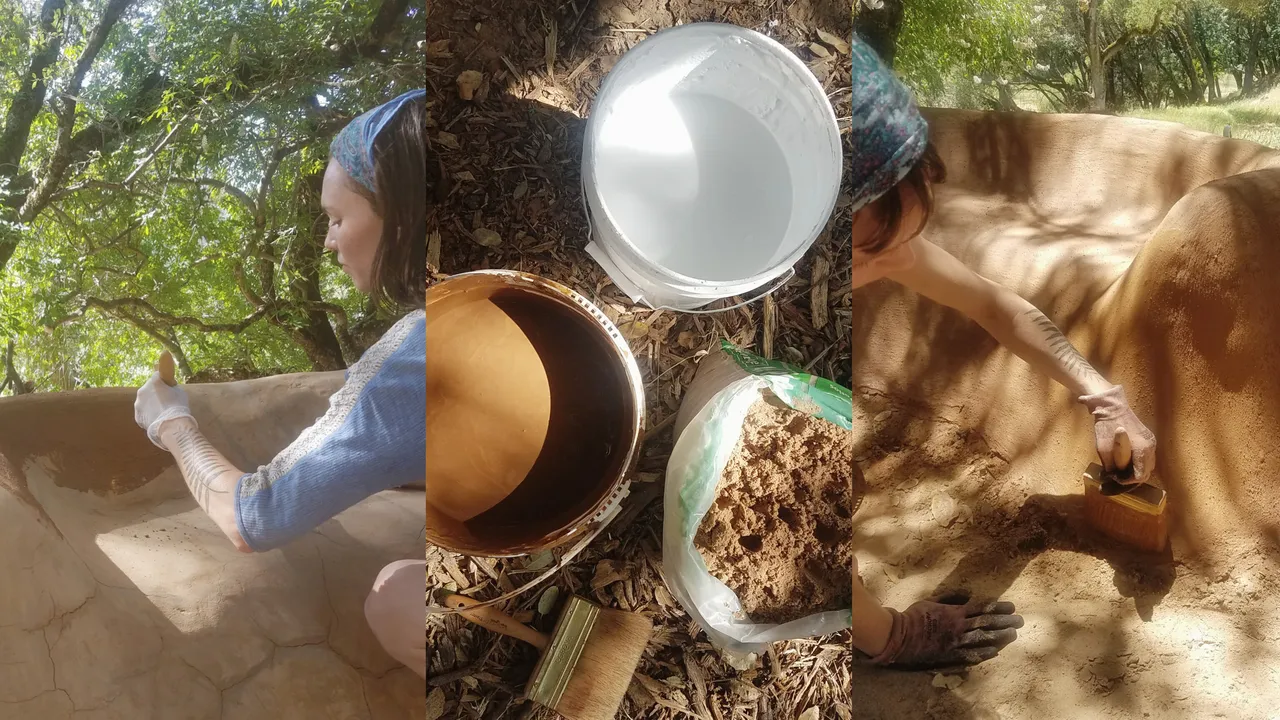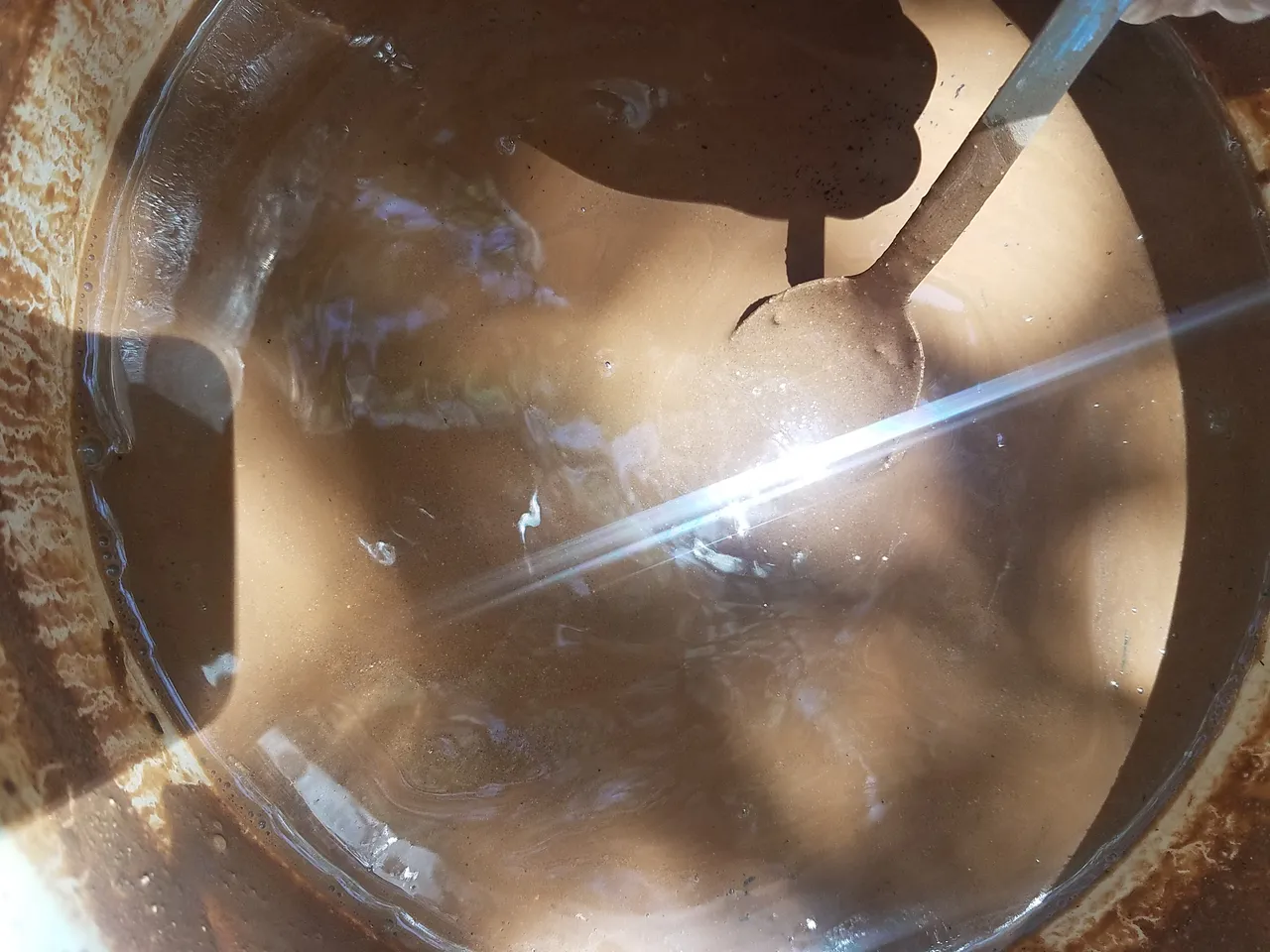Three years ago I began building this bench out of entirely natural materials. Clay from the land itself, straw from a nearby feed store, and a bit of sand from here and there.

My time at this location is always limited so I wasn't able to totally complete the bench. And instead of painting a protective layer, or at the very least tarping the bench until further work could be done, I just let it be.

The following year there had been a bit of erosion due to rain and wind. To make up for the layer that had washed away I added another round of cob mixture and began to contemplate how I would stabilize and protect the cob with something more permanent.

My mom suggested we use a commercial lime wash that she had found online. I had a lot of fun painting the bench as well as some other cob borders I had made for some nearby flower beds.

The bench looked amazing and I was really pleased with the unique color and we took many, many photos (like this one with my younger sister Jana, myself, and lifelong friend Emma) sitting atop it.
But, and to my great embarrassment, this paint was not to last.

As you can see in the forefront of this picture most of the paint washed away and even some of the cob beneath. After growing up during decades of drought in the sunny state of California I have been truly surprised by the rainy winters of the last two years.

If I had read the instructions that came with the lime paint properly I would have known that this product was not meant for exteriors. I will certainly give it a try in the future with indoor walls but, I had to simply try again.
I made up another cob mix of clay, sand, and finely chopped straw and replenished the eroded cob before moving on to something that I should have done in the past - a lime/clay plaster.

This particular step I covered in last week's edition of my Natural Building Diaries. In that post I revealed the ingredients of this clay plaster so I won't retread that ground again here.
Something important to mention that I may not have previously is that I let this clay plaster dry completely before adding anything else to it. This layer took about a week to dry and I busied myself with other tasks on this campsite/homestead.
The Final Layer (I hope)
After working on this bench a couple weeks over the course of three years I a was ready for it to be finally, and truly complete. The clay plaster had dried nicely and with minimal cracking.

Of course with natural building there will always be natural details and tiny deficiencies that you don't often see with more industrialized materials. Fortunately the lime wash paint I made covered the cracks and, at least so far, seems to have sealed the bench off from any potential weather erosion.

The paint I made with three simple ingredients:
- Clay Cream (or, as I know it, Barbotina)
- Lime Putty (the most liquid layer which may just be called Lime Wash)
- Fine Sand (I used bags of sandbox sand)
Before each painting session I mixed the lime/clay/sand mix the previous night and whisked it well before using. If you, dear reader, are thinking of using lime or lime wash of any kind please remember to use the upmost caution when mixing. Lime can be erosive and is very drying to the skin so I always used gloves when mixing and painting.

Once again the painting was very delightful. I lit up a joint and put a spooky story on in the background, or simply listened to the sounds of the wind and turkey calls as I painted.

I let a day pass between each layer of paint which, due to the lime, dried very quickly. In all I painted three layers, each time making sure to add liberal amounts to any cracks that hadn't yet been sealed.
We are all so happy with the natural color of the clay that came from this very land and are all praying that this will be the last time I have to paint this bench. As I eluded to in the title, only time will tell.